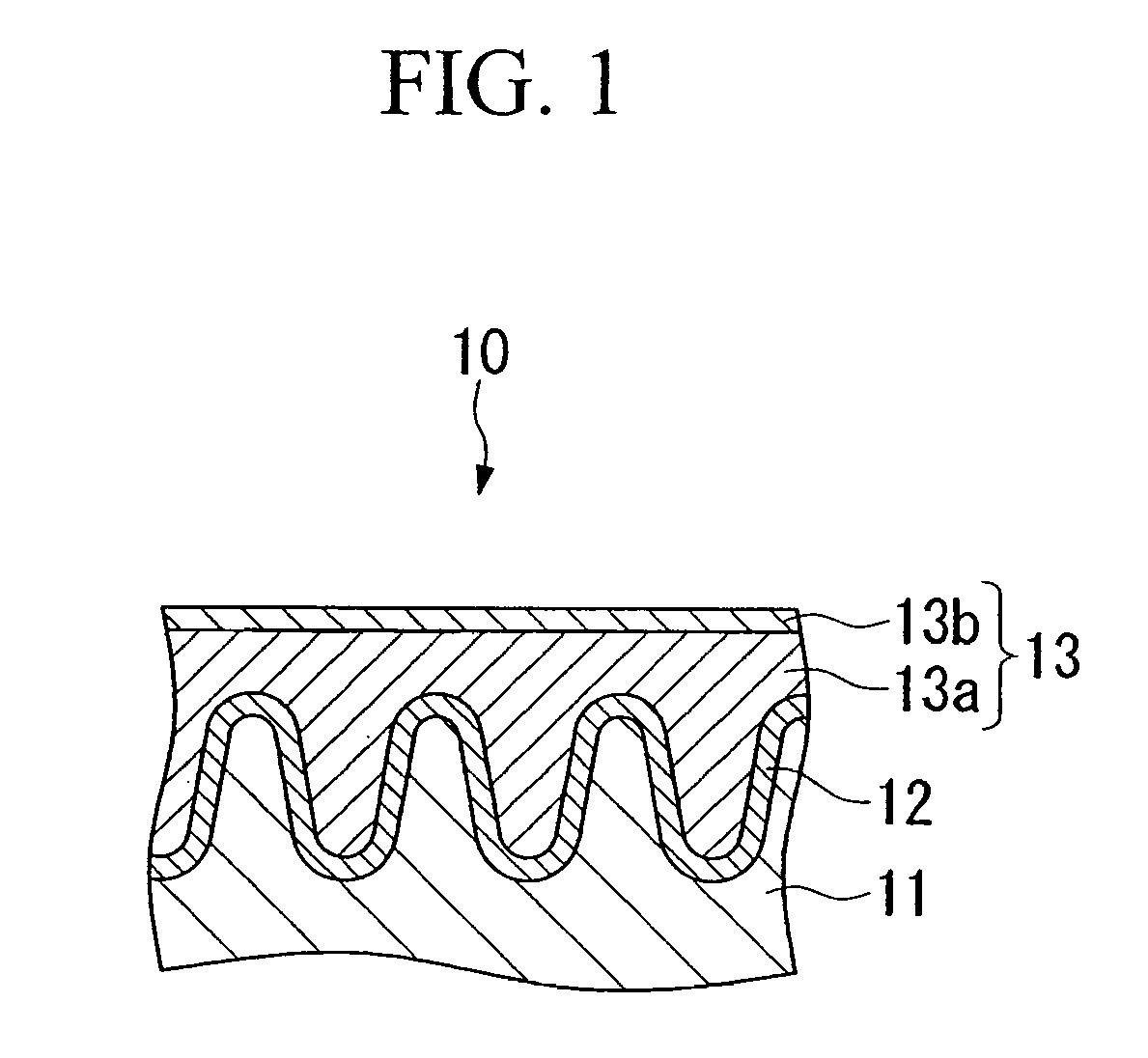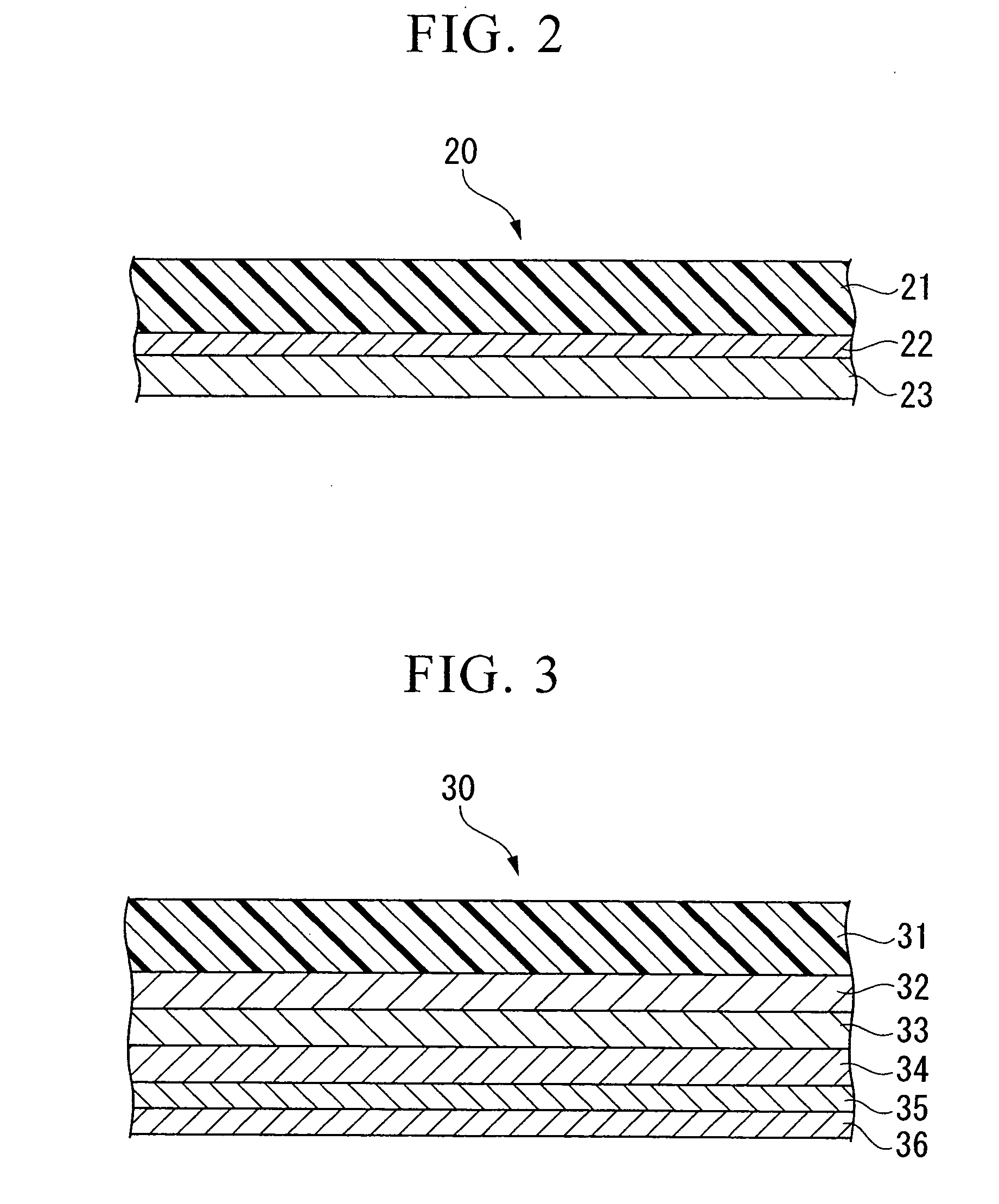Conductive composition and conductive cross-linked product, capacitor and production method thereof, and antistatic coating material, antistatic coating, antistatic film, optical filter, and optical information recording medium
a technology of conductive polymer and cross-linked product, which is applied in the direction of non-metal conductors, conductors, organic conductors, etc., can solve the problems of difficult mass production, difficult to form a uniform film of a conjugated conductive polymer, and difficult to achieve high conductivity, etc., to achieve excellent conductivity, low impedance, and simple manner
- Summary
- Abstract
- Description
- Claims
- Application Information
AI Technical Summary
Benefits of technology
Problems solved by technology
Method used
Image
Examples
preparation example 1
Preparation of polyisoprenesulfonic acid
[0321] Sodium isoprenesulfonate in the amount of 171 g (1 mol) was dissolved in 1000 ml of ion-exchanged water. An oxidant solution of 1.14 g (0.005 mol) of ammonium persulfate previously dissolved in 10 ml of water was added in drops to the solution over 20 minutes while stirring at 80° C. The solution was stirred for 12 hours.
[0322] 10% by weight diluted sulfuric acid in the amount of 1000 ml was added to the obtained sodium isoprenesulfonate polymer solution and approximately 1000 ml of sodium isoprenesulfonate solution was removed by ultrafiltration. An amount of 2000 ml of ion-exchanged water was added to the remaining solution and approximately 2000 ml of the solution was removed by ultrafiltration. This ultrafiltration operation was repeated three times.
[0323] Then, approximately 2000 ml of ion-exchanged water was added to the obtained filtrate and approximately 2000 ml of the solution was removed by ultrafiltration. This ultrafiltra...
preparation example 2
Preparation of polystyrenesulfonic acid
[0330] Sodium styrenesulfonate in the amount of 206 g (1 mol) was dissolved in 1000 ml of ion-exchanged water. An oxidant solution of 1.14 g (0.005 mol) of ammonium persulfate previously dissolved in 10 ml of water was added in drops to the solution over 20 min. while stirring at 80° C. The solution was stirred for 12 hours.
[0331] 10% by weight diluted sulfuric acid in the amount of 1000 ml and water in the amount of 15000 ml were added to the obtained sodium styrenesulfonate solution and approximately 13000 ml of sodium styrenesulfonate solution was removed by ultrafiltration. 12000 ml of ion-exchanged water is added to the remaining solution and approximately 13000 ml of the solution was removed by ultrafiltration. This ultrafiltration operation was repeated three times.
[0332] Then, approximately 12000 ml of ion-exchanged water was added to the obtained filtrate and approximately 13000 ml of the solution was removed by ultrafiltration. The...
example 1
[0333] The amount of 14.2 g (0.1 mol) of 3,4-ethylenedioxythiophene and a solution of 27.5 g (0.15 mol) of polystyrenesulfonic acid in 2000 ml of ion-exchanged water were mixed at 20° C.
[0334] An oxidation catalysis solution of 29.64 g (0.13 mol) of ammonium persulfate and 8.0 g (0.02 mol) of iron (II) sulfate in 200 ml of ion-exchanged water was slowly added to the mixed solution while maintaining at 20° C. and stirring. Then, the mixture was stirred and allowed to react for 3 hours.
[0335] Ion-exchanged water in the amount of 2000 ml was added to the obtained reaction solution and approximately 2000 ml of the solution was removed by ultrafiltration. This operation was repeated three times.
[0336] Diluted sulfuric acid in the amount of 200 ml of 10% by weight and 2000 ml of ion-exchanged water were added to the ultra-filtered solution and approximately 2000 ml of the solution was removed by ultrafiltration. The amount of 2000 ml of ion-exchanged water was added and approximately 2...
PUM
| Property | Measurement | Unit |
|---|---|---|
| Angle | aaaaa | aaaaa |
| Angle | aaaaa | aaaaa |
| Electrical conductor | aaaaa | aaaaa |
Abstract
Description
Claims
Application Information
 Login to View More
Login to View More - R&D
- Intellectual Property
- Life Sciences
- Materials
- Tech Scout
- Unparalleled Data Quality
- Higher Quality Content
- 60% Fewer Hallucinations
Browse by: Latest US Patents, China's latest patents, Technical Efficacy Thesaurus, Application Domain, Technology Topic, Popular Technical Reports.
© 2025 PatSnap. All rights reserved.Legal|Privacy policy|Modern Slavery Act Transparency Statement|Sitemap|About US| Contact US: help@patsnap.com


